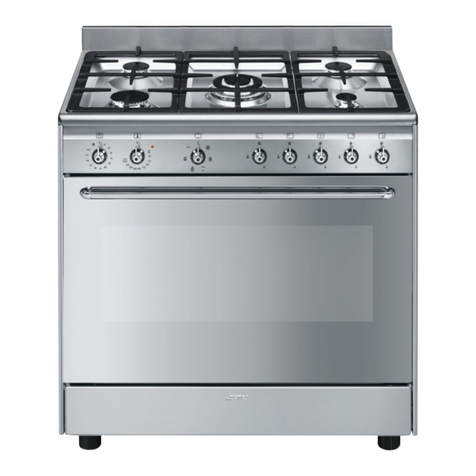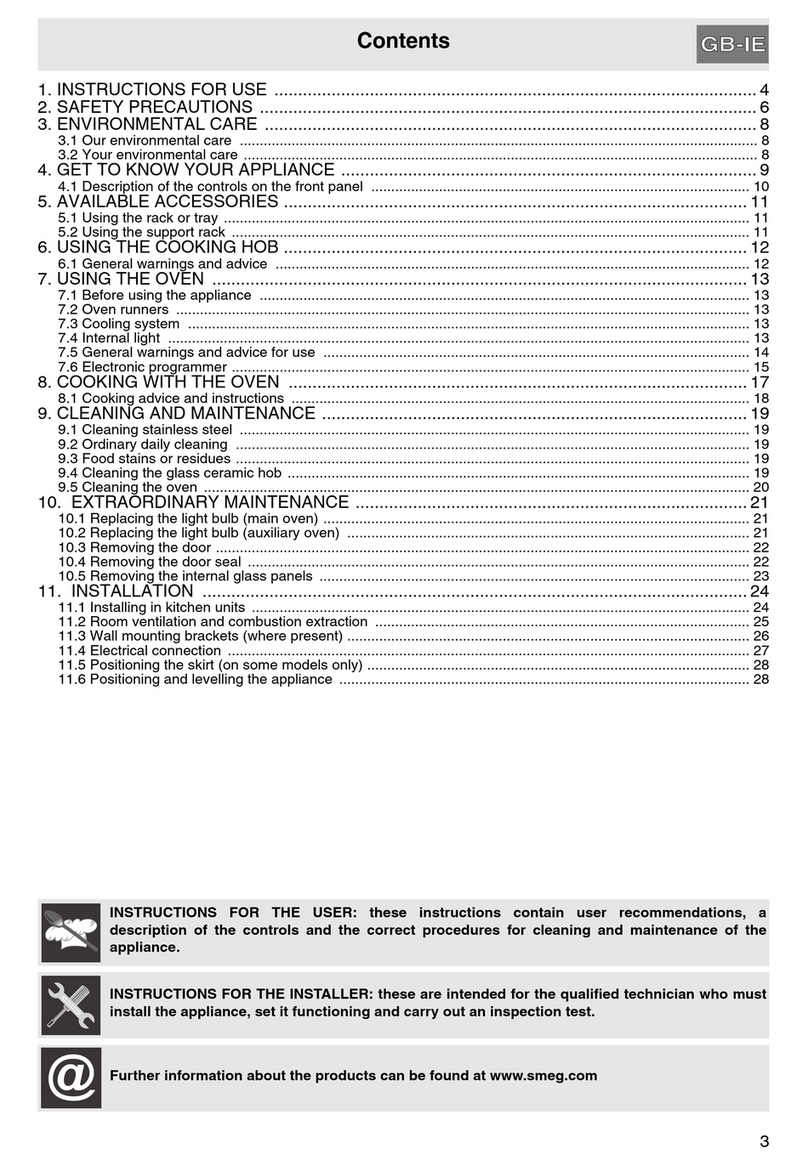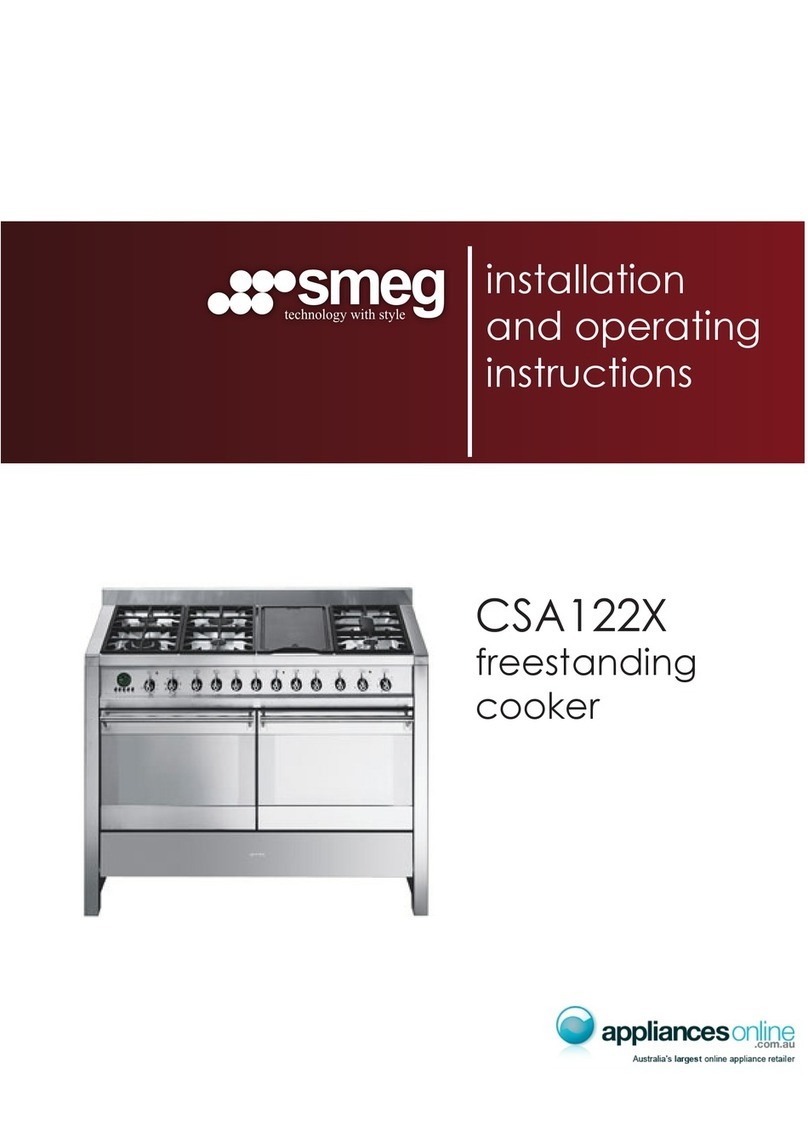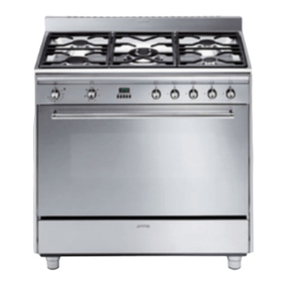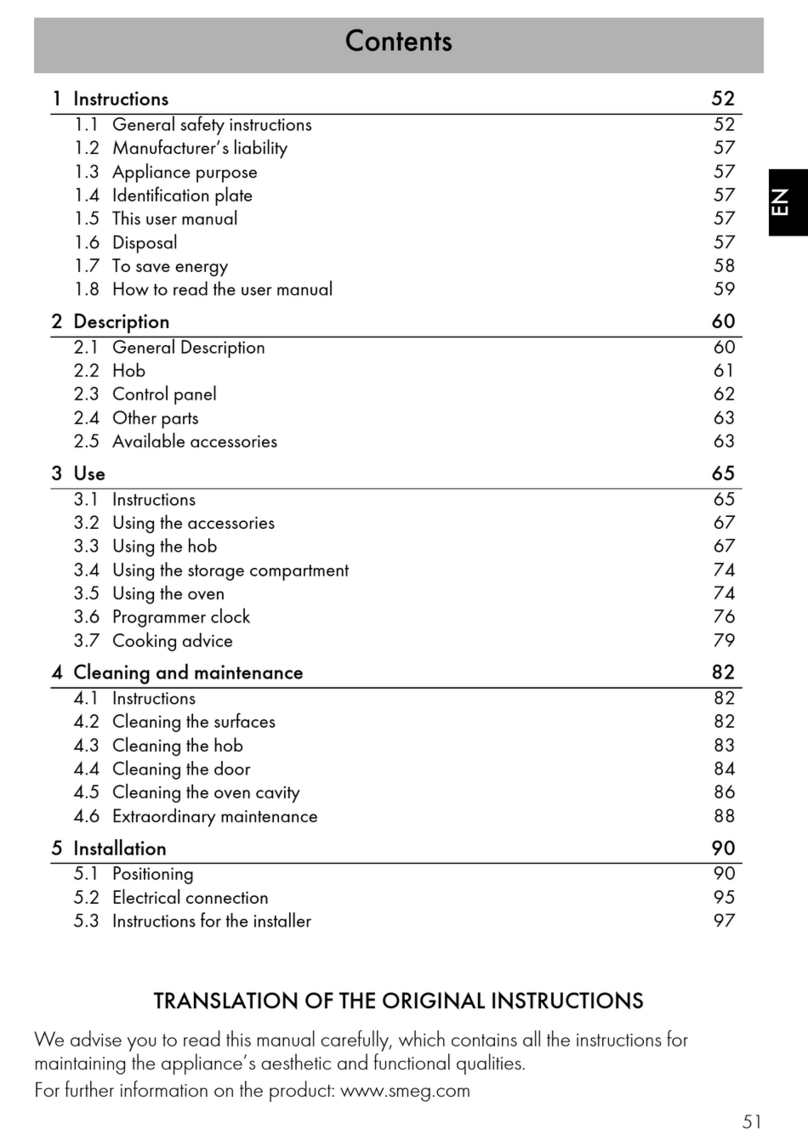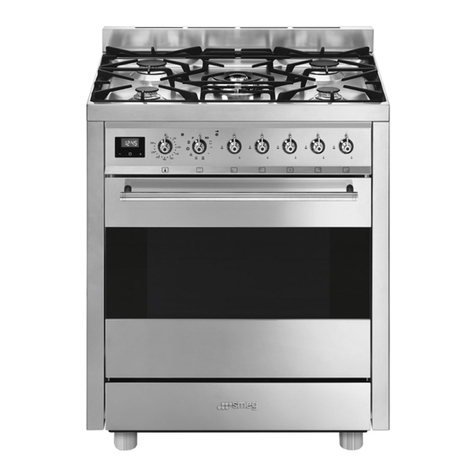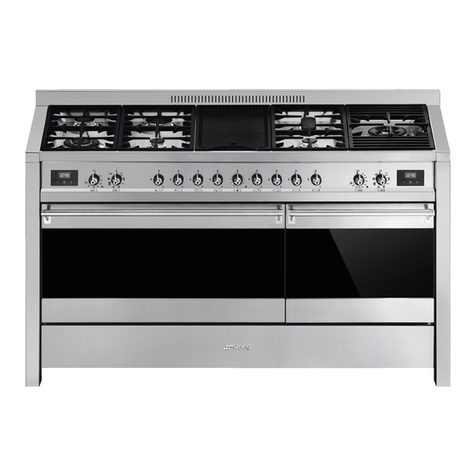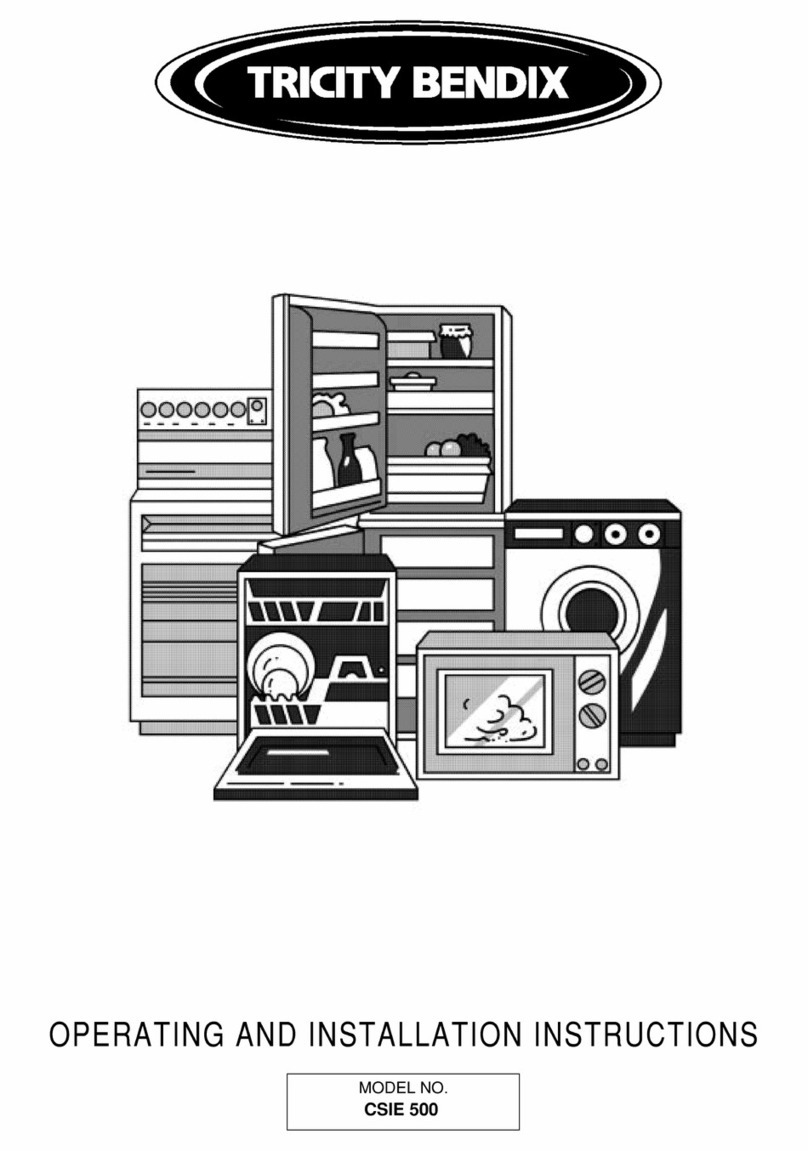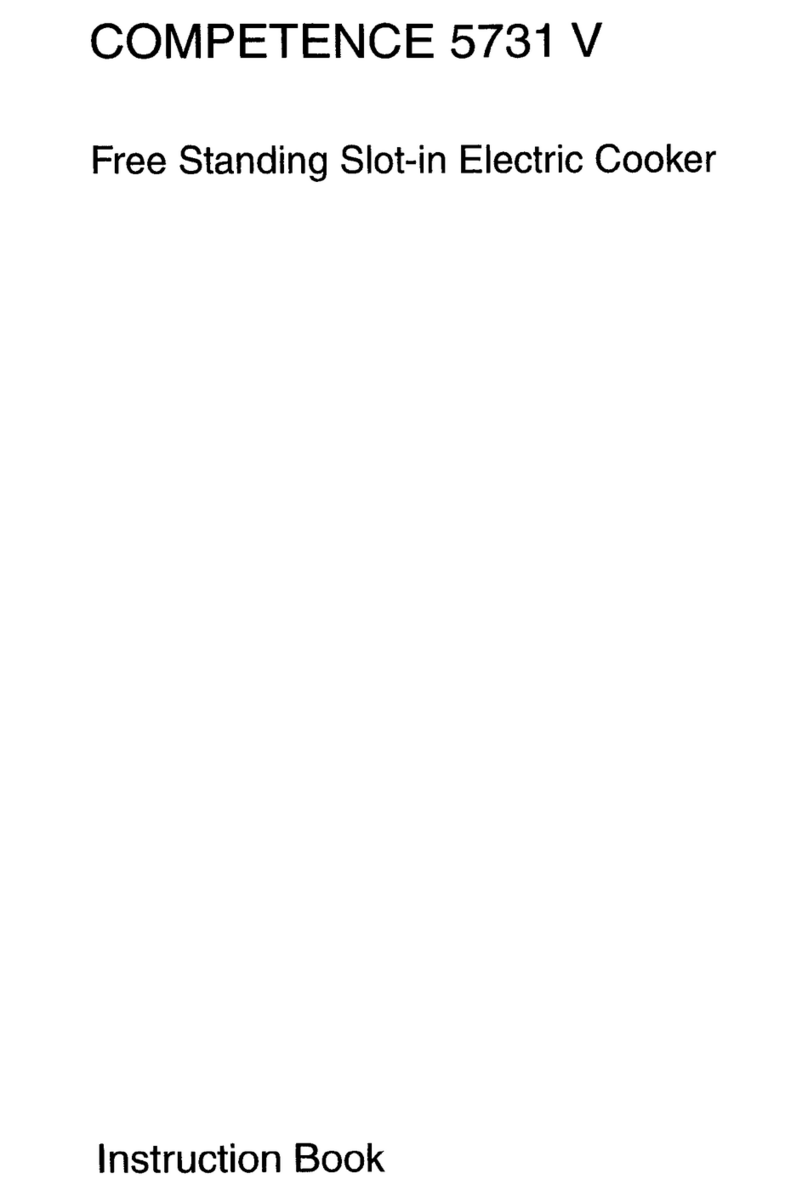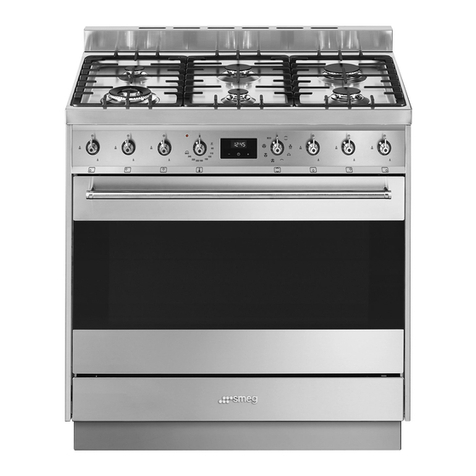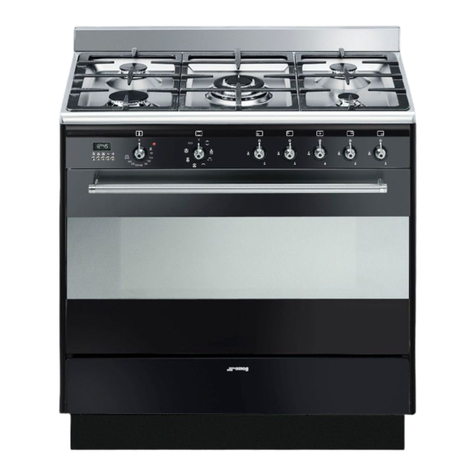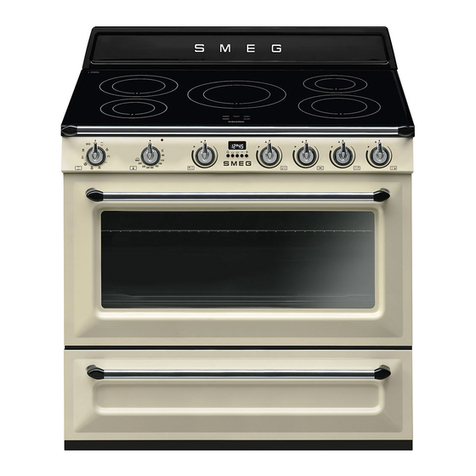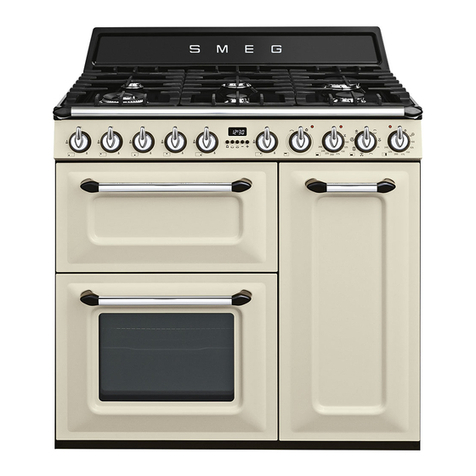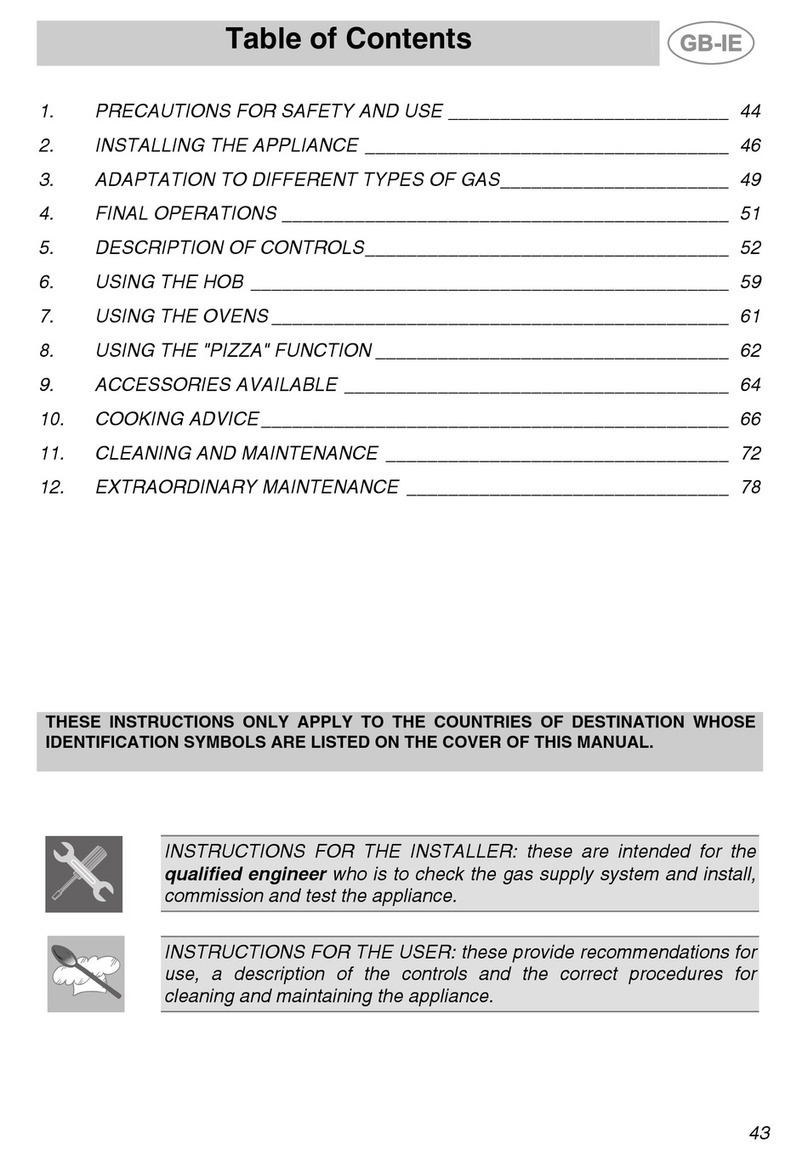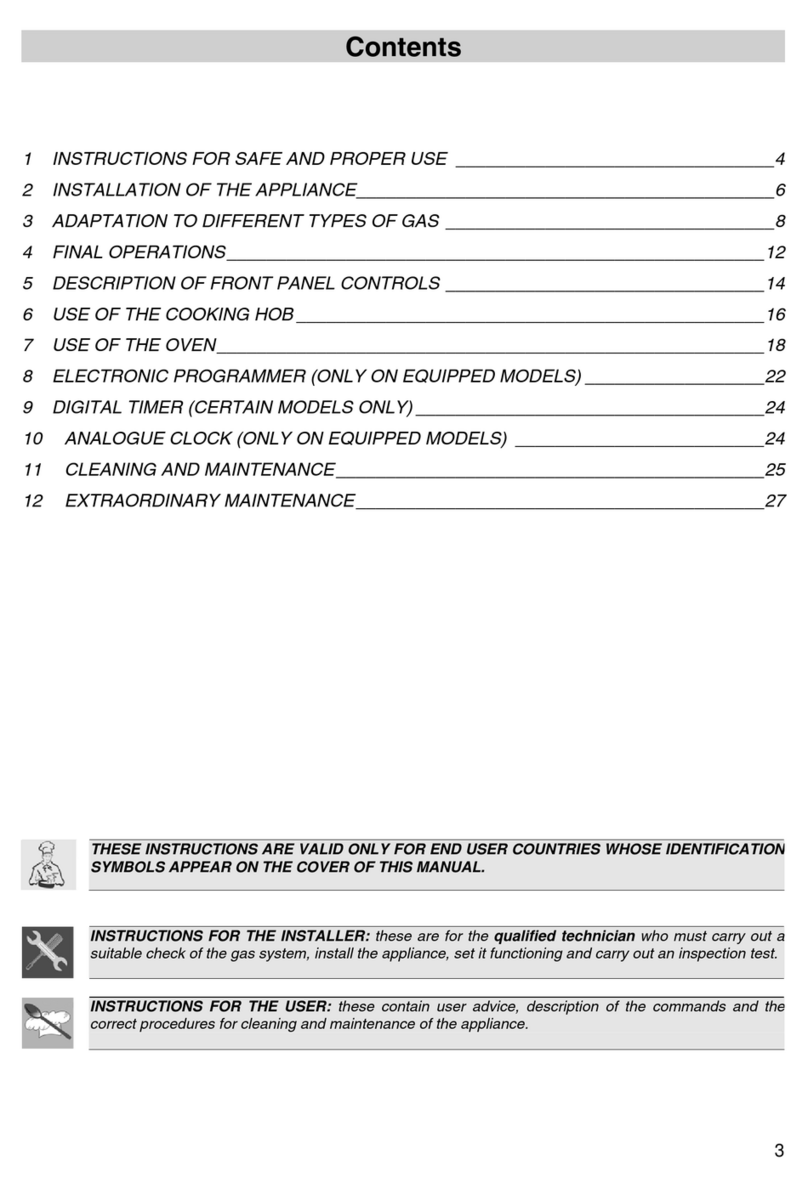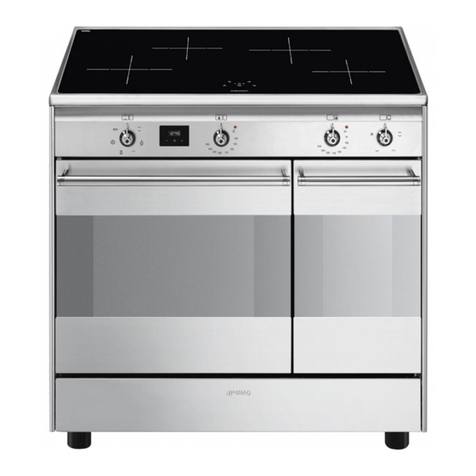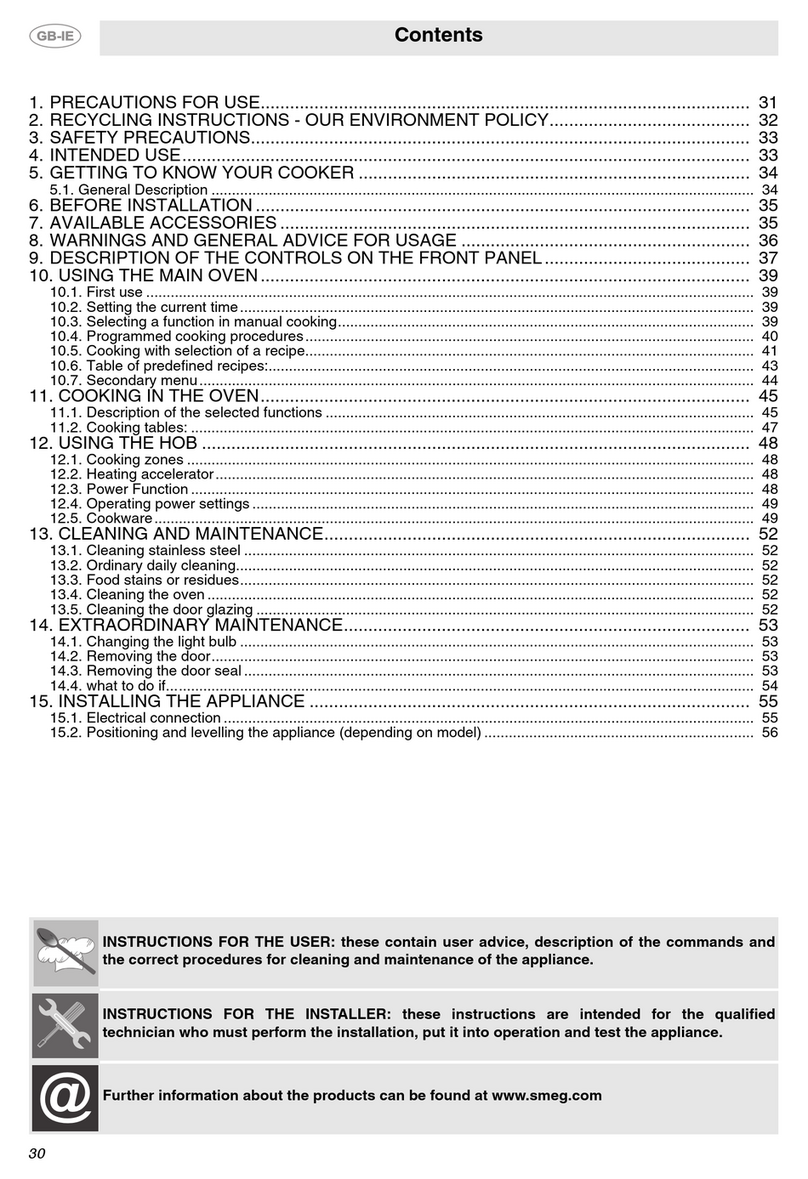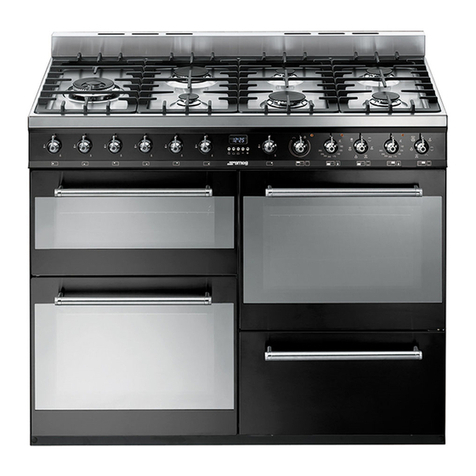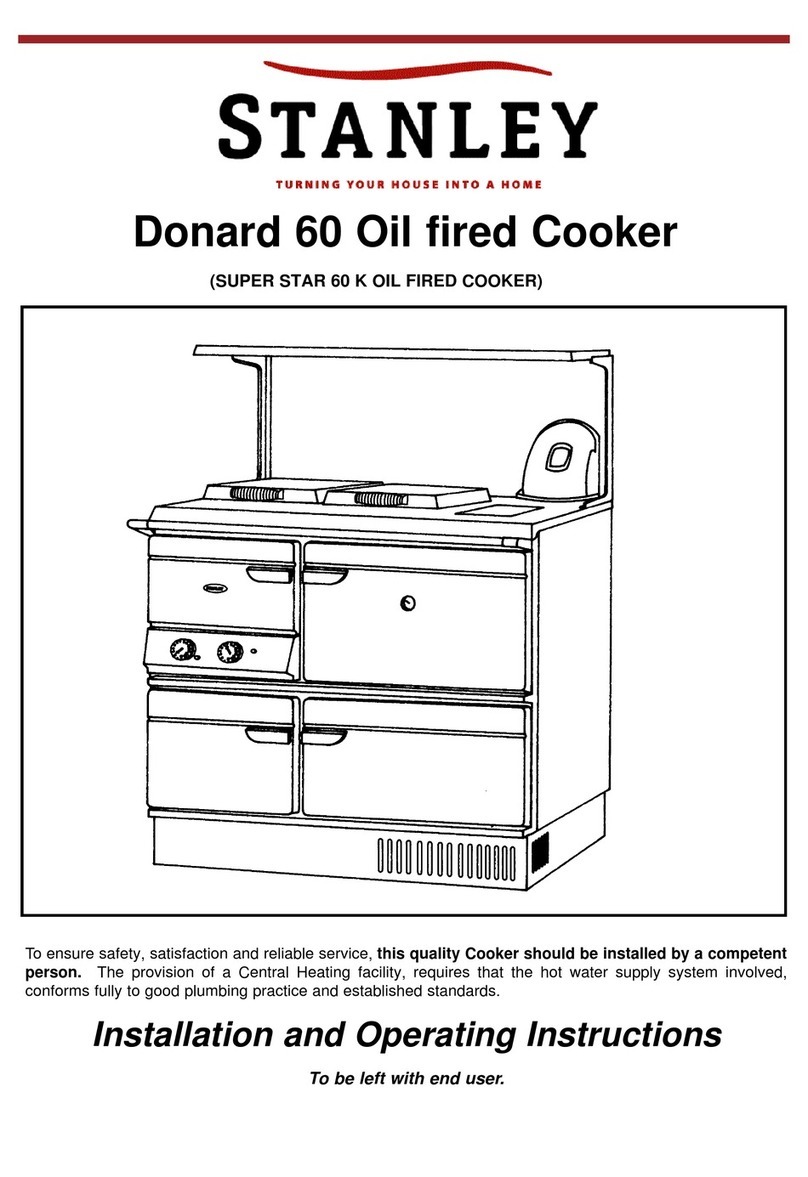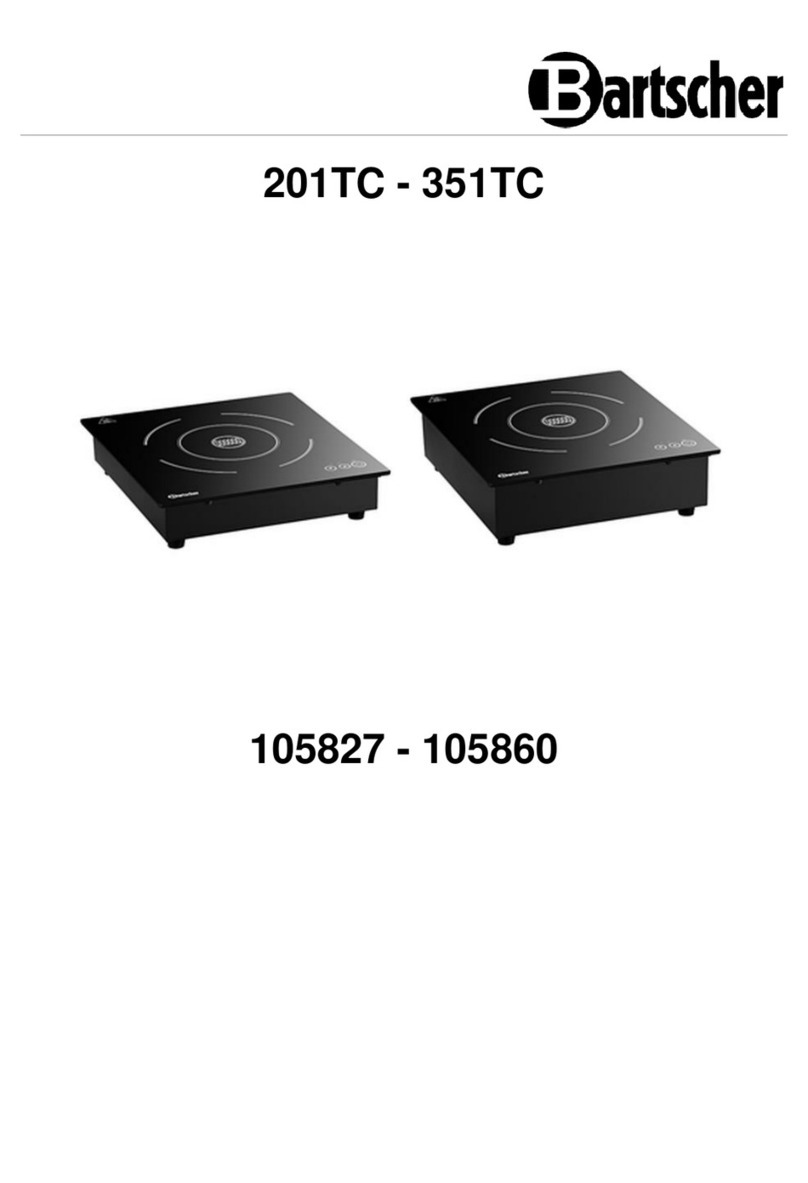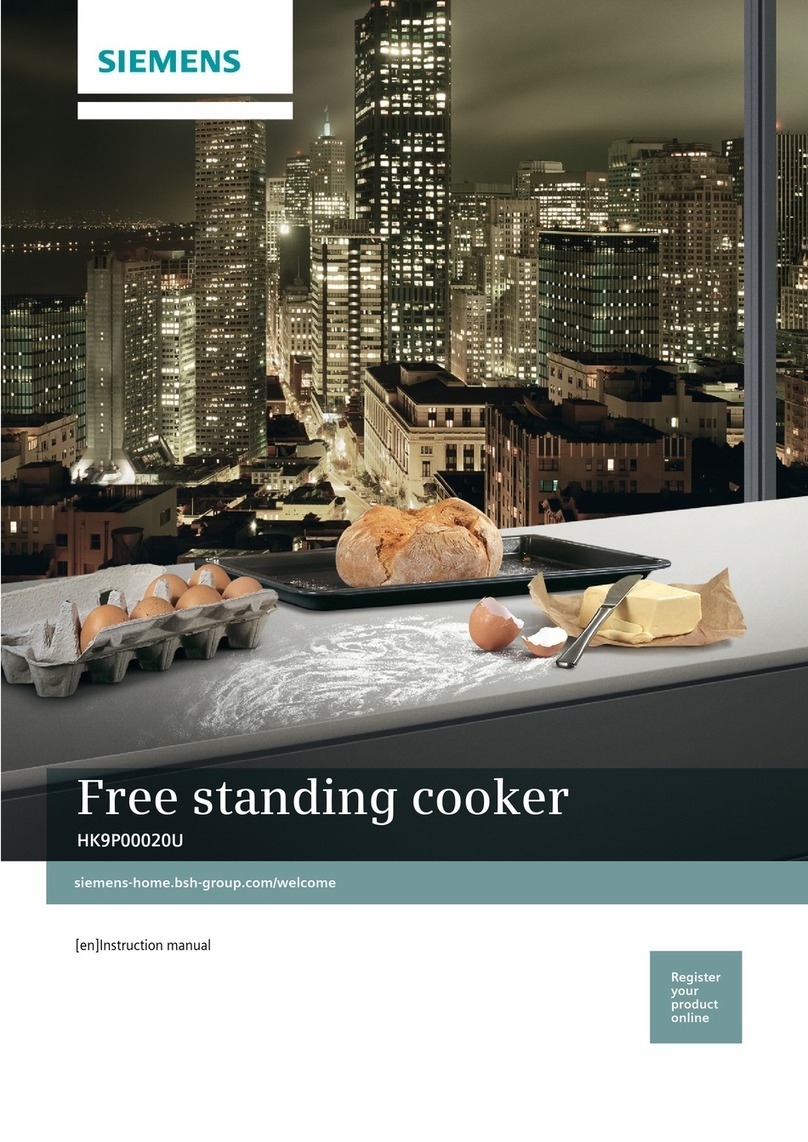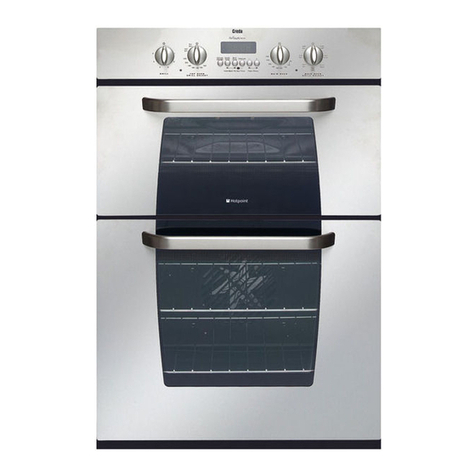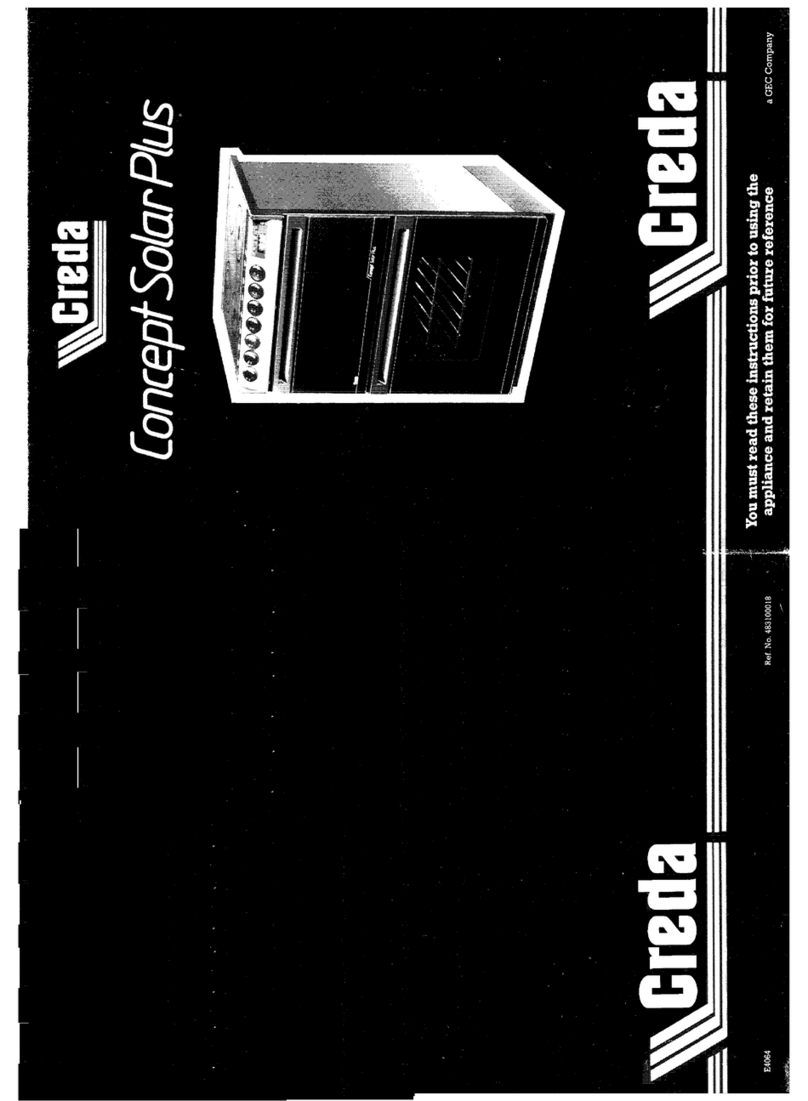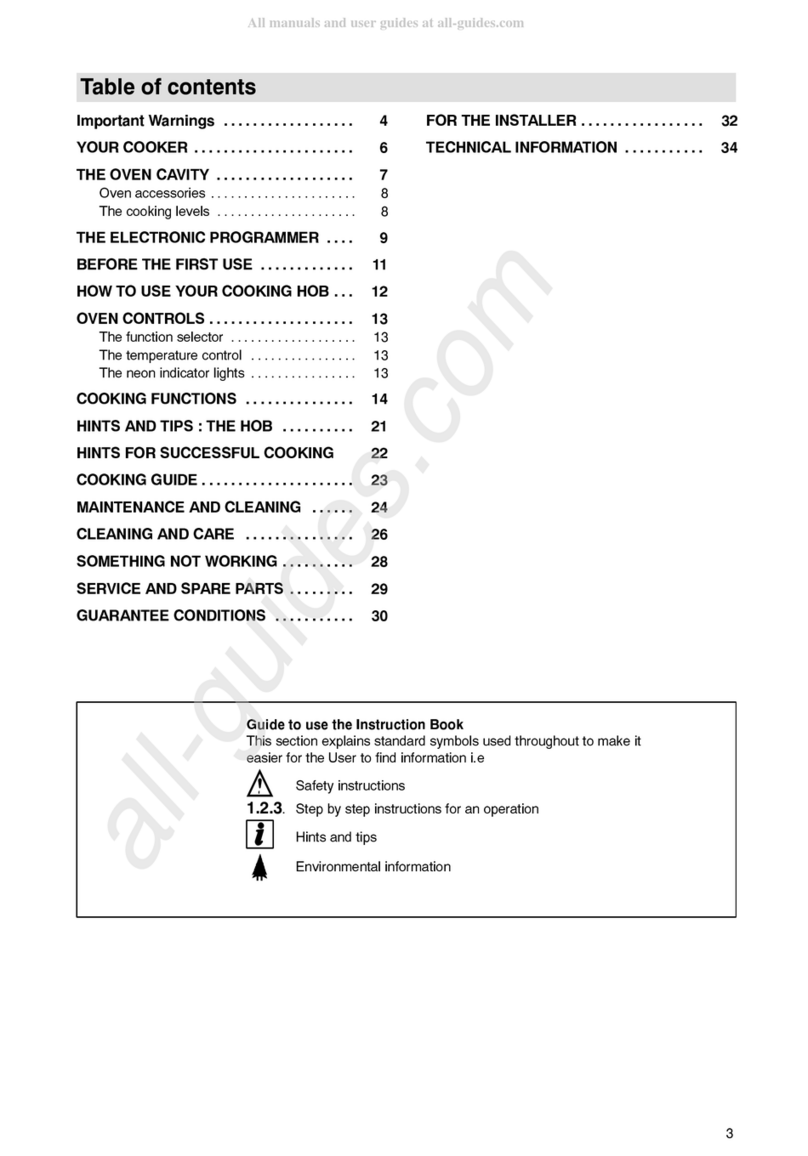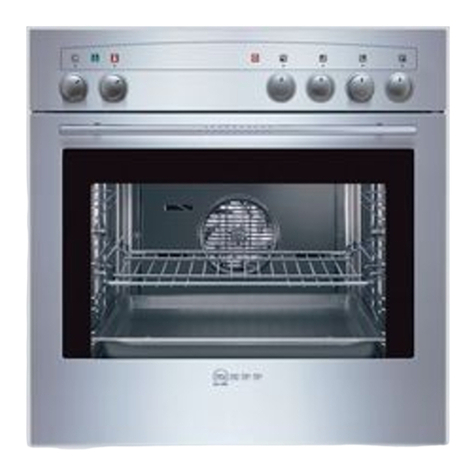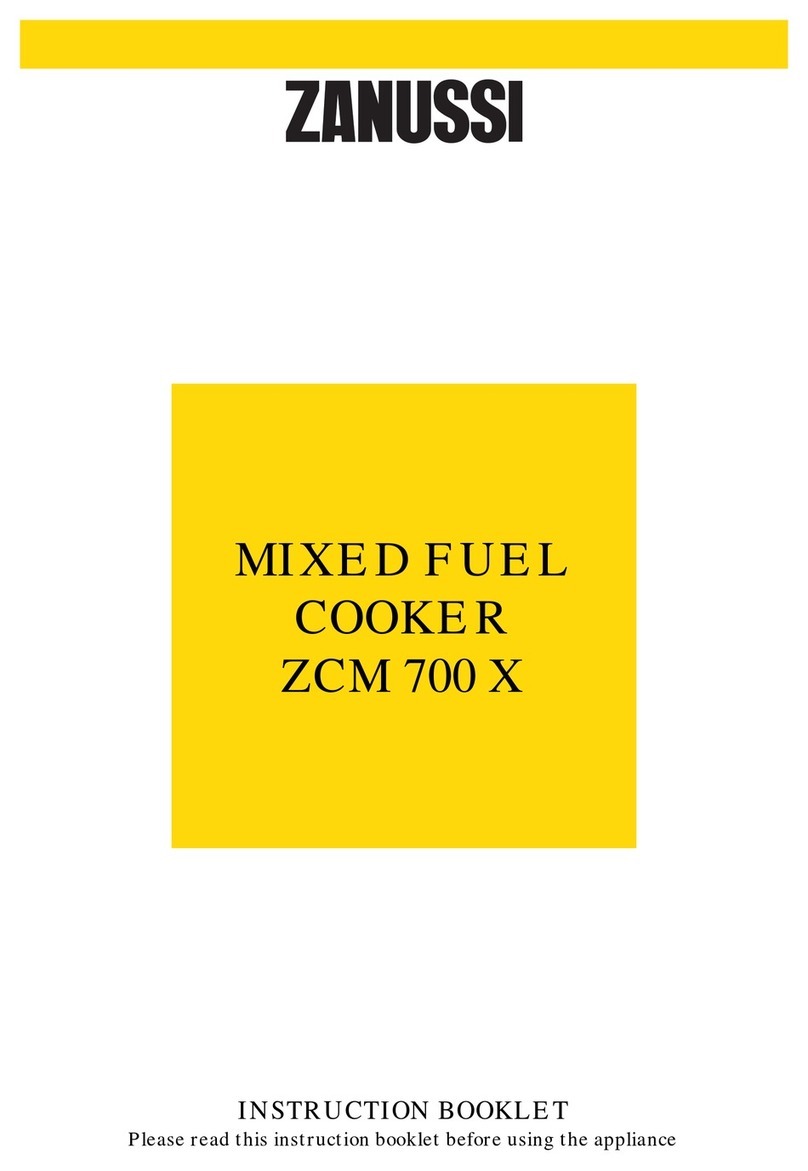
12 - USE 91477A899/A
USE
Preliminary operations
• Remove any protective film from the outside
or inside of the appliance, including
accessories.
• Remove any labels (apart from the technical
data plate) from the accessories and
shelves.
• Remove and wash all the appliance
accessories (see chapter "CLEANING
AND MAINTENANCE").
First heating
1. Set a cooking time of at least one hour (see
paragraph "Using the oven").
2. Heat the empty oven compartment at the
maximum temperature to burn off any
residues left by the manufacturing process.
When heating the appliance
•airtheroom;
•don'tstay.
Using the accessories
Racks and trays
Racks and trays have to be inserted into the side
guides until they come to a complete stop.
• The mechanical safety locks that prevent the
rack from being removed accidentally must
face downwards and towards the back of
the oven cavity.
Using the hob
All the appliance’s control and monitoring
devices are located together on the front panel.
The burner controlled by each knob is shown
next to the knob. The appliance is equipped
with an electronic ignition device. Simply press
the knob and turn it anti-clockwise to the
maximum flame symbol, until the burner ignites. If
the burner does not light in the first 15 seconds,
turn the knob to and wait 60 seconds
before trying again. After lighting, keep the knob
pressed in for a few seconds to allow the
thermocouple to heat up. The burner may go out
when the knob is released: In this case, the
thermocouple has not heated up sufficiently.
Wait a few moments and repeat the operation.
Keep the knob pressed in longer.
Correct positioning of the flame-spreader
crowns and burner caps
Before lighting the hob burners, make sure that
the flame-spreader crowns are correctly
positioned in their housings with their respective
burner caps. Make sure that the holes in the
flame-spreader crowns are aligned with the
igniters and thermocouples.
Practical tips for using the hob
For better burner efficiency, to minimise gas
consumption and prevent damage to the
cooking hob, use pans with lids and of suitable
size for the burner, so that the flames do not
reach up the sides of the pan. Once the contents
come to the boil, turn down the flame far
enough to ensure that the liquid does not boil
See General safety instructions.
Gently insert racks and trays into the
oven until they come to a stop.
Clean the trays before using them for
the first time to remove any residues left
by the manufacturing process.
In case of an accidental switching off, a
safety device will be tripped, cutting off
the gas supply, even if the gas cock is
open. Return the knob to and wait
at least 60 seconds before lighting it
again.
